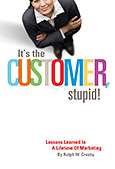Advertising Goes “Native”
Lately, marketers are talking about a new form of communications – “native advertising.” While the concept is anything but new, it has risen to new heights in the social media world.
Native advertising is defined as “a form of paid media where the ad experience follows the natural form and function of the user experience in which it is placed.” This is not much different than traditional print “advertorials” or TV “infomercials” in which the paid content often looks like editorial content. But, “native” takes the advertorial/infomercial to new heights because of the ubiquity of social media platforms and their potential for targeting.
It’s a way to advertise while retaining the look and feel of the digital platform’s regular content, giving users the experience they expect on the social site. But these are not like banner ads. The native ads don’t overtly promote a product or service directly. Rather, they tend to offer helpful, interesting or educational information, and they look and feel like the platform’s natural content.
According to the online content company Sharethrough, Inc., “The biggest platforms and publishers in the world have universally adopted native-first monetization strategies.” Besides the social leaders such as Facebook, Twitter and Tumblr, the major publishers have joined the native bandwagon. “Companies such as Forbes, the Wall Street Journal, New York Times and Hearst have introduced advertising integration that match both form and function of their sites,” Sharethrough reports.
If you plan to include “native” in your marketing mix, there are a few things you’ll need to succeed:
- A strong profile of your target audience and their content consumption preferences.
- A list of online publishing platforms that incorporate native advertising into content that speaks to that target audience.
- Relationships with editors and publishers at native advertising providers. Online content publication is a fast-paced business and those relationships will keep you informed about opportunities to insert your message.
- A nimble and reactive content strategy that will allow you to integrate your message into the content of the site with seamlessness and customization.
In the digital age, marketers find special benefits in using social media because they can go where their target customer is already engaged. “Native” allows marketers to integrate their advertising into the content the customer expects to experience in that engagement. If you can go “native,” your advertising will have greater meaning and value to your audience.
###

 Businesses often are started by entrepreneurs with an idea, a product or service, or an expertise. Many of them fail, not because the idea or product isn’t good, but because their attention is overwhelmingly directed internally – e.g., what goes into the product – when they should focus externally, always reminding themselves:
Businesses often are started by entrepreneurs with an idea, a product or service, or an expertise. Many of them fail, not because the idea or product isn’t good, but because their attention is overwhelmingly directed internally – e.g., what goes into the product – when they should focus externally, always reminding themselves:
